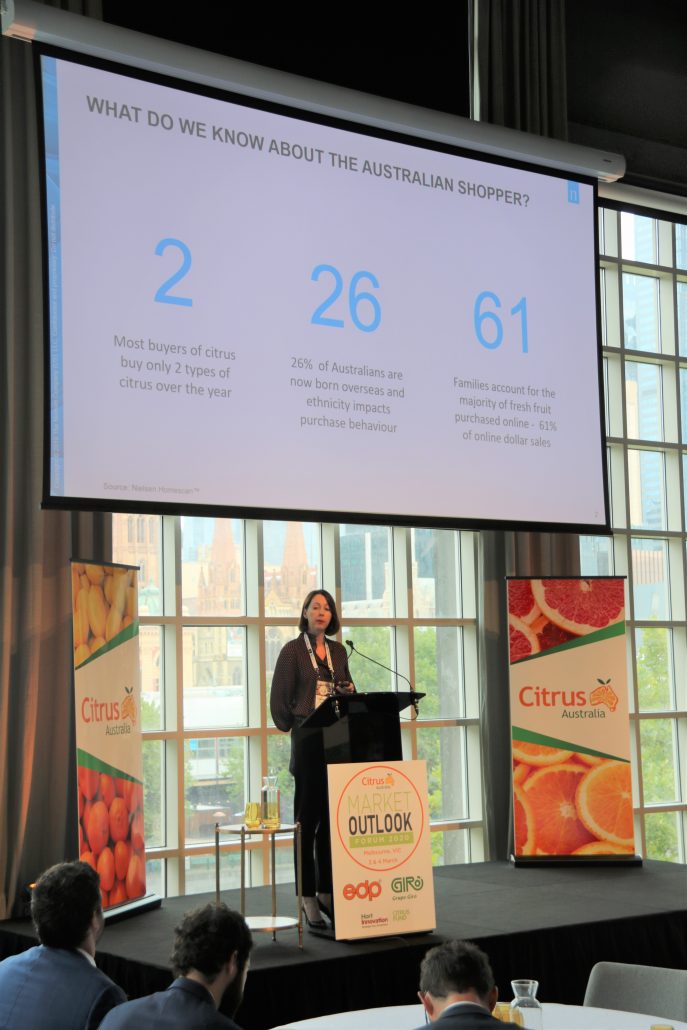11 March 2020
Supermarket data reveals opportunities for citrus sales growth
Supermarket data reveals opportunities for citrus sales growth
11 March 2020
The Australian citrus industry could gain $149 million a year if customers added one more type of citrus to their regular shop, according to Chanel Day, Director of Analytics at Nielsen.
Utilising information from Nielsen Homescan – a panel of 10,000 households who record their grocery sales – Chanel told Market Outlook Forum delegates that half of Australian shoppers only buy one or two types of citrus fruit, so adding value to the citrus category meant expanding their citrus repoirtre
Recruiting new buyers should be a priority to foster growth and this was a proven strategy, she said.
“It’s the law of double jeopardy – the more households you have buying your product, the more frequently they will also buy your product,” she said.
“72 per cent of households buy mandarins in Australia and that is the highest percentage of households that buy citrus fruit.
“We’ve crunched the numbers and what that means is there are 2.7 million households in Australia that are not buying mandarins.
“Clearly that is a big opportunity for growth.”
Online shopping is another opportunity for expansion with the retail channel growing at seven times the rate of the entire grocery market – 35.8% compared to 5% – to the end of last year.
In January, sales of fruit online was only 3.4% of the total value of fruit sales in Australia, up from 2.4% a year ago.
Families represented 61% of the total online fruit sales in Australia, up from 52% a year earlier.
To compare, families only account for 36% of total fruit sales across the entire grocery channel.
“So you probably don’t have to think too hard to connect the dots,” Chanel said.
“We know the citrus industry under indexes when selling to families and we know that online is a fast growing channel and we know that online is where we can sell to families.
“So digital strategies that sell to families online are potentially one way tickets to give this industry a boost.”
Embracing online marketing could benefit key export markets too with more than half of the internet users in China having purchased fresh groceries online.
Back in Australia, major supermarkets account for 73.6% of fruit sales.
The supermarkets’ share of the fruit market had grown at the expense of smaller independent grocers and fresh markets, but this trend wasn’t reflected in citrus.
In the citrus category 18.6% of produce was sold through grocers and markets, compared with 16.5% of the entire fruit category.
“So any sales or marketing strategies you develop really do need to consider this channel,” Chanel said.
“It is really important to be reaching as many buyers as possible, as consistently as possible.”
The changing Australia demographic – 26% of people are born overseas – and how it influenced the purchasing of citrus.
According to the data, if the household head was born in an Asian country, they were more likely to purchase oranges and mandarins.
“So when you are making investment strategies consider who is the future of Australia; what is that demographic profile change; and how do you position your products to capitalise on that,” Chanel said.

Chanel Day, Nielsen, at the Market Outlook Forum.
Membership
You are not logged in
If you are not already a member, please show your support and join Citrus Australia today. Collectively we can make big things happen.
